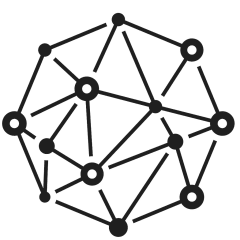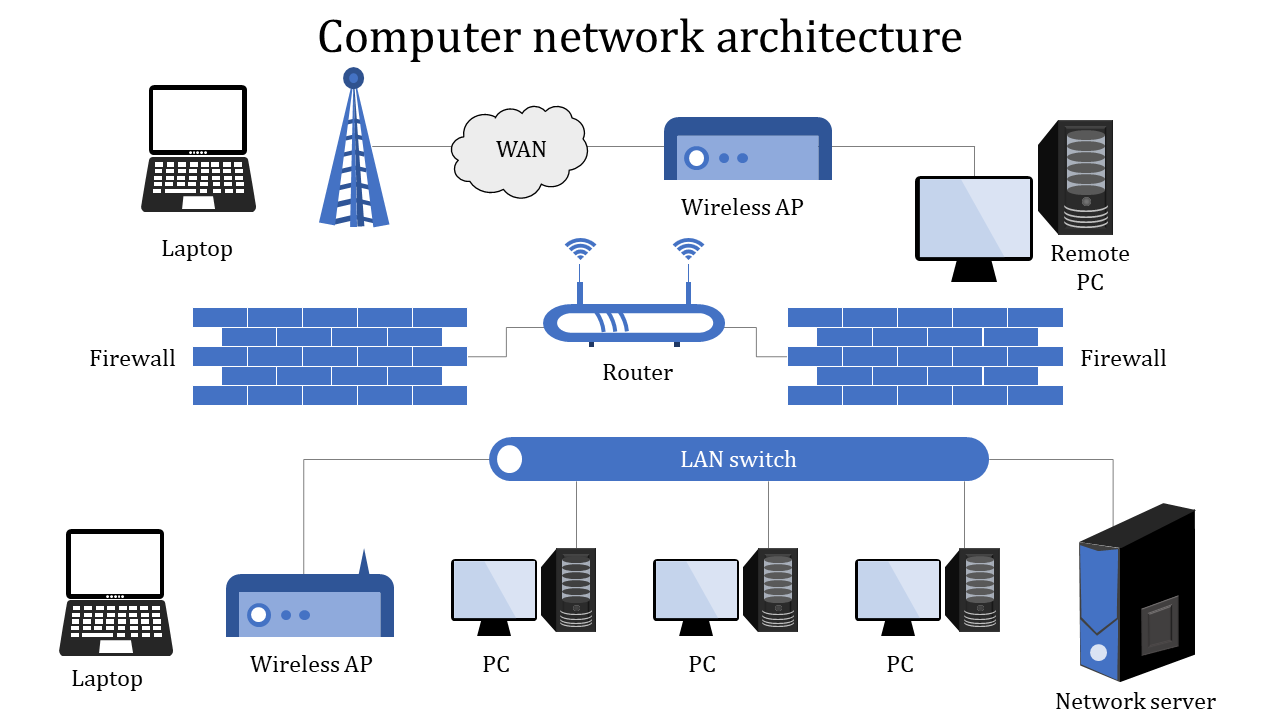
Searching for a step-by-step guide on How to become a Computer Network Architect? In today’s digital age, the role of a Computer Network Architect is key. They are responsible for designing and putting in place trustworthy networks to make sure data can be sent securely across devices. To manage this kind of complex system properly, they need familiarity with network architecture, computer systems, network design as well as system integration and most importantly information security.
With their abilities plus expertise gained through experience, they come up with ways to enhance networking performance also create plans for future upgrades or maintenance of these kinds of networks. No business or Organisation that has an intricate infrastructure can do without them!
Defining the Role of a Computer Network Architect

Are you after a tech career which combines the skills of an engineer and those of an artist? Then becoming a computer network architect is worth considering. This niche role involves devising, building and upkeeping intricate networks involving computers, networks and IT services that organisations use. So what’s expected from a computer network architect? Primarily they must guarantee stability, security and trustworthiness when constructing networks – taking into account local area (LAN) as well as wide area (WAN) systems within their customer base infrastructure.
Staying up to date on current technologies is of utmost importance for a computer network architect. They must be aware of industry trends, so they can anticipate any issues and solutions that might arise as well as give advice based on specific circumstances when it comes to hardware or software needs. This also involves creating methods for dealing with systems while using coding strategies to make efficient structures that help the flow of data through wireless or wired connections – what an interesting job!
Network architects must also have extensive knowledge of business strategies as well as an understanding of security issues, like intrusion detection and prevention measures that are essential to safeguard crucial data and assets. Moreover, these architects need to possess technical know-how which goes beyond just being aware of how hardware components come together – they should be able to explain the techy concepts in a way the non-tech clients can understand. Building constructive relationships with those customers is particularly important since problems may emerge during project formulation or implementation phases, so regular communication between them becomes necessary for troubleshooting purposes.
Importance of Network Architecture in Today's Business
Network architecture is of paramount importance to the success of any business. It’s the bedrock on which all other IT services, such as applications, databases and even web access are built – meaning it needs careful designing for an organisation’s tech stack to work properly together with no security breaches. In this modern era businesses rely more heavily than ever before on technology; any size enterprise requires a well-structured and secure network infrastructure so that everyday operations can go ahead without issue. What kind of setup do you have?
Without strong structures, businesses are not able to achieve the same level of efficiency they need for optimal performance or to maintain a competitive edge in their chosen market. A network architecture provides the framework for how information is passed around inside an organisation’s system. This allows users at multiple sites with different devices to access securely and safely while still retaining data integrity. It also means that internal systems can be connected as well as external services such as cloud computing solutions and third-party databases being accessed if needed.
The significance of having a secure network architecture cannot be emphasised enough; it assists organisations to stay adaptable by permitting them to promptly adjust to alterations without needing extensive renovation processes. What’s more, it gives enhanced performance for business operations as most applications require adequate networks so they can run correctly and safely. Additionally, an expertly shaped network architecture diminishes operational costs because scalability can be accomplished without tremendous investments in extra hardware or software permits.
Finally, good network architectures offer a first-class customer experience with prompt access times and high uptime rates – both of which are indispensable in the present competitive marketplace. Ensuring that your structure meets the special requirements of your organisation while bearing potential future changes that may influence it is essential too: accommodating new apps and technologies; guaranteeing plenty of scalability if the user base grows; instituting powerful security policies; reducing downtime when applications fail or external threats arise – all these measures have their part to play!
The Integral Role of Computer Systems in Network Design

Computer network architecture is an ever-evolving field, as technology advances the role of computers in supporting it evolves too. Computers are essential when it comes to designing, implementing and keeping a computer network up and running properly. From connecting users with their devices over networks to making sure that everything runs smoothly – these systems play critical roles here!
When constructing a good computer network you have your work cut out for you: things like ensuring adequate bandwidth availability, scalability levels and security protocols must be taken into consideration. Have all those aspects been covered?
Designing and managing a network can be tricky challenges to take on. But by planning how different parts of the architecture interact with each other, these tasks become more manageable – which computers help us do quite well! Computers also allow us to simulate operations or test out scenarios before we bring them into reality; this way we know that our designs work as they should. What’s more, computer systems are becoming ever-more integral in monitoring and maintaining networks too – making sure everything works just as it should.
Network administrators need tools at their disposal so they can quickly spot any issues or areas where changes could be made. Without computers, a lot of this work would have to be done by hand – which is long-winded and prone to mistakes. However, monitoring systems that are automated allow admins to detect potential problems easily and sort them out right away.
Computer systems also let you keep tight control over how people access the network; from setting up user authentication methods other than usernames and passwords (like biometrics) down to security protocols about who has access to what data on it. Having these controls in place guarantees your company’s data stays secure while still letting employees get into just the parts of the system relevant to their job roles every day.
It becomes noticeable instantly how essential computer networks are when designed properly with modern technology; we’ve seen quite a vast transformation in how organisations go around doing tasks now because of computers’ power both large and small!
Insights into Advanced Network Design Techniques
Being a computer network architect, it is vital to get the hang of cutting-edge system plan techniques for constructing dependable and secure networks. The hardships with complex methods are that they typically need more learning and experience to comprehend and utilise accurately. Despite this obstacle, even if you are an absolute amateur there are some primary understandings into these approaches which can help you begin.
To kick off any advanced network design the most important thing is determining your organisation’s needs. This implies taking out time to consider the business specifications of your network as well as its technical necessities – both equally significant yet so often forgotten or overlooked!
Once the criteria have been set, it’s important to decide what kind of network setup will work best for those needs – like peer-to-peer or client/server. Furthermore, other things such as scalability, cost implications and user access control should be taken into account when making this design judgement. When a decision has been reached about which type of architecture is suitable, then it’s time to look at how exactly can we get it implemented.
Here, there are plenty of options to mull over like routing protocols for controlling packet flow through network nodes or segmentation strategies for forming logical groupings within a given network area. On top of that, security measures such as firewalls and Virtual Private Network (VPN) technology should be taken into account when knocking up an advanced networking architecture.
Once all these components have been hammered out and implemented it’s critical to test your design in detail to guarantee it meets performance objectives before deploying into production environments. This could involve testing facets like uptime reliability or maximum throughput capacity depending on the necessary environment you’re working with. Nailing this step can save loads of time and cash further down the line if any issues are picked up earlier rather than leaving them until after going live in production mode.
Understanding the Complexity of Data Security in Network Architecture

Considering the complexity of data security in network architecture, computer network architects have their work cut out for them. There’s an abundance of potential threats lurking around every corner on the web, ranging from cybercrime and malicious attacks to breaching communications and storage systems.
Unsecured networks are particularly vulnerable to unauthorized access by intruders or hackers who may be after user information or corporate property stored on servers that should’ve been secure – a scary prospect! As such, computer network architects need to get up close with attack tools used by nefarious individuals/groups so they can build effective deterrents against them.
Identifying the main components of system security is a key step when it comes to tackling any issues. This usually involves combining different authentication, encryption and data integrity checks with permission levels as well as other necessary safeguards. If there are any weak spots in this set-up, they must be taken care of straight away by introducing extra layers of defence – you can’t leave room for an attacker to get through your defences!
It’s also crucial that computer network architects keep tabs on the latest advancements in cyber security; technologies change and sometimes more advanced solutions need to be implemented if systems are going remain safe from attacks.
AI-based algorithms can provide high-level security from malicious actors, while blockchain-enabled systems are becoming increasingly in demand for safe storage options. It’s not only important to be aware of how the government regulates digital safety within your industry but also vital that you’re up to date with any applicable laws and codes when it comes to cyber protection.
It doesn’t stop there though, tech professionals should keep an eye on trends related not just inside their field but beyond as well; such as data privacy regulations imposed by public organisations or private companies – these advancements have major repercussions for future safeguarding tactics so it pays off being ahead of the game rather than falling behind otherwise you may find yourself exposed against rising threats in cyberspace!
Responsibilities of a Network Architect in System Integration
/Complete-Guide-to-%E2%80%93-2.png)
Being a network architect is integral for system integration. Fundamentally, they are responsible for designing, installing and maintaining the computer networks that fulfil an organisation’s computing needs by its current and future requirements. To do this successfully requires a deep understanding of their employer’s goals; subsequently creating appropriate networking architectures to follow those objectives, acquiring any relevant hardware or software necessary as well as configuring them correctly so they work optimally before then monitoring how efficiently it runs over time. It can be quite a task!
Grasping the current and upcoming computing requirements of clients is paramount for any network architect. Not only do they have to be conversant with fresh techs in business software applications, but also modern networking technology. Having a complete understanding of Ethernet, TCP/IP, IPv4/IPv6 etc., is an added necessity – allowing them to design cost-effective solutions that fit their customers’ demands perfectly.
As a network architect, it’s essential to have experience with different server virtualisation technologies like VMware and Hyper-V. It’s also important to be aware of storage area networks (SANs), Cisco switches/routers, cloud computing platforms such as Azure or AWS and wireless networking technology for mobile implementations.
Once the architecture is designed by the network architect they then need to make sure it meets all specifications – this involves procuring appropriate hardware components if needed; selecting an OS; installing these correctly; configuring them for optimal performance; setting up user accounts along with firewall rules for data security measures taken are securely implemented; testing the entire system thoroughly before going live ensuring full functionality is present at launch time; offering training on how users can use their new system properly should this be necessary too; plus continuously monitoring its output so that any future changes or expansions will work out well within those parameters defined initially.
The aim is to create an efficient setup which satisfies current needs while allowing room for enough growth potential into account later down the line.
Exploring the Career Path of a Computer Network Architect

Delving into the vocation lane of a Computer Network Architect is an indispensable piece of understanding the wide scope of jobs accessible in this field. As a computer network modeller, you’ll be answerable for planning, making and keeping up system frameworks that permit correspondence among different clients and gadgets. You will likewise be entrusted with guaranteeing your systems are secure from cyber dangers just as other malevolent assaults. It’s significant to remember that this job requires expansive information on PCs and networks to experience working in IT or related ventures; however, it isn’t an apprentice-level position.
Getting into a career in network engineering requires some essential qualifications. It’s key to first get certified, such as Microsoft Certification, Cisco Certified Network Associate (CCNA), CompTIA A+ certification, VMWare Certified Professional (VCP) or Security+ certification so that you can demonstrate your technical skillset and prove your ability to take on complex projects. This is sure to impress any employer looking for somebody who’ll be able to pick up tasks quickly after getting onboarded. Of course, though there are many ways of gaining experience outside of certifications- internships at local businesses or tech companies could provide valuable hands-on learning opportunities with designing and managing networks which would look great on any CV!
Staying current in the ever-evolving field of computer networks is vital for any network architect. Attending conferences and seminars related to networking can help keep you abreast with the latest trends, as well as introduce new techniques that are being used in the industry today. Taking it further by researching products and technologies online or reading articles/reports written by key players within this sector will give you an edge over your peers.
Doing so also gives a better understanding of what leading vendors have on offer, how corporations use cutting-edge designs globally and ultimately learn best practices when dealing with complex scenarios while building up networks from scratch! And lastly – collaboration plays an important role too; working closely together brings out the best results if done correctly!
Essential Skills for Becoming a Successful Network Architect
As a computer network architect, there are certain essential skills that you need to get ahead. Communication is paramount in this tech-related field; not only must they be able to relay complex ideas and concepts between different parties – some may have little understanding of the subject matter – but also having the ability to communicate across multiple languages will give them an edge as networking applications do differ from country to nation. Alongside communication, it’s vital for any aspiring network architects out there nurturing their career growth plans that good organizational abilities should feature prominently on their CV too!
Could such skill sets help bring your dream job closer? Organising projects from beginning to end, breaking them down into manageable steps and tasks and setting realistic target dates for completion is a must-have skill when it comes to network architects. But there’s more – they need to be organised with their knowledge; keeping up-to-date on the latest industry trends, brushing up on relevant software and systems, and staying atop of professional qualifications or CPD are all major factors that contribute towards becoming successful in this role. Not forgetting time management too – another fundamental ability which can make or break an architect!
Having an analytical mind is a must for anyone interested in the network architect career. The ability to recognise patterns within data sets and abstract concepts without needing concrete examples are key skill – not forgetting excelling in IT awareness so you can identify what makes a system secure or vulnerable when it comes to hardware/software requirements. You’ll also need great attention to detail, as this allows you to spot even small issues or potential problems before they have a chance of becoming bigger ones; something that’s especially handy when working on tight budgets!
When it comes down to performing tasks, having accurate estimations of how long jobs will take is essential – with multitasking abilities needed if changes occur while still managing workloads efficiently between projects all while meeting deadlines and maintaining quality standards too. Troubleshooting processes require lots of patience from network architects which can be time-consuming if the root cause isn’t identified quickly enough but keeping cool helps here due diligence pays off in the end!
The Impact of Network Architecture on Business Efficiency
Network architecture has a massive bearing on the operational efficiency of any business. It takes charge of how data is sent and received among all components in the network, for instance, computers, servers, printers, storage devices as well as routers. About scalability question arises -network architecture can make a tremendous difference when it comes to expanding operations smoothly so that they could embrace more hardware or users quickly enough? As an example – a mesh topology-based network configuration can be redrafted much faster than one built around a hub-and-spoke pattern.
Network architectures have a huge bearing on performance. Different types of networks bring different levels of speed and dependability when it comes to sending data. To illustrate, wireless networks are usually faster than wired ones; however, this could potentially increase risks if signals can be intercepted by unauthorised individuals anywhere between the origin and destination! This renders companies able to spread out more quickly without having to take on ultra-costly alterations or changes all at once – which is great news for them. Can you imagine what life would look like with no access to high-speed internet?
On the other hand, wired networks are usually more resistant to external interference but they tend to have slower transmission rates compared to wireless options. Therefore businesses must think carefully about which type of network will be most suitable for their needs so that performance levels remain high while making sure security is still sound. When it comes down to safety, this also has a big part in how businesses approach setting up and managing their networks.
Companies need confidence that any information held on the system won’t fall into unauthorised hands or leak out accidentally – whether internally or externally sourced threats are at play here. Switches and routers take a key role when it comes to ensuring secure access control measures between different areas of the network whereas firewalls serve as an extra defence against hackers/viruses/malware etc from outside sources trying to gain access illegally.
It is important then when building these architectures that integrated safeguards such as these can be combined with other components effectively without leaving behind any weak spots which may lead to data breaches or breakdowns later on.
Future Trends and Developments in Network Architecture
Considering the future of computer networks, there is an array of potential and advancements that we can expect to see in this ever-evolving industry. Networking architecture is developing at a fast rate due to the necessity for more efficient connection methods on both hardware and software levels.
One such development which has been progressively increasing in prevalence among organisations recently, is having multiple points of access into their network; whether it be within physical premises or via online platforms across different geographical locations – so customers have many options when trying to connect with them. How will these changes affect our lives? What other trends should we keep up with? These questions remain pertinent as technology continues its unstoppable rise!
Getting dependable connections between corporate networks and the public internet is no longer just a bit handy – it’s essential for some businesses. This presents a challenge to architects to build up an immutable construction while still granting compulsory access levels. The growth of mobile systems further complicates this, making alterations in network architecture patterns that must be taken into consideration when designing reliable solutions.
What kind of secure setup can provide enough flexibility without compromising safety? How can we guarantee resources are kept safe from unauthorised users? These questions come at the forefront whenever constructing or revising your infrastructure layout…
With the number of users accessing networks via their phones or other wireless devices on the rise, new transmission protocols have been developed to support large traffic levels at high speeds while making sure bandwidth is allocated properly among different applications and users. With ubiquitous connectivity now a reality, businesses are looking for ways to make sure that their products and services can be accessed anytime from anywhere; this extra demand adds complexity for architects when designing systems.
Cloud computing has opened up new avenues as companies host data offsite – cloud-based solutions becoming more attractive due to cost savings over traditional networking models, with content delivery networks (CDN) providing resources faster by caching close to endpoints geographically. 5G technology brings even more power which makes it possible for routers and switches in distributed cloud infrastructures to handle massive amounts of information quickly; thus presenting an interesting challenge that architects must face trying to figure out how best these technologies integrate into existing systems.
Wrapping Up!
To sum it up, computer network architects have a huge responsibility in creating and looking after dependable and secure networks. They must be well-versed in the aspects of networking architecture, data security systems, system integration as well and computers. It requires technical skills which are essential for success in this area; having the right tools together with an extensive understanding of how these networks operate can assist them in crafting and keeping up tomorrow’s computing infrastructures. What would such skilled professionals bring about when given enough resources? How much could they contribute towards efficient workflow between employees?
Sign up now and get our All Access Pass for loads of benefits! This membership will give you access to the 50+ courses we offer. Our super convenient All Access Pass gives you the chance to make your ambitions a reality and reach those goals by learning IT networking, cybersecurity, cloud computing, and DevOps all at once. With its flexible structure, it will fit perfectly with whatever way of learning works best for ya – as much or as little planning is required. So take advantage today by registering right away – don’t miss out on all this awesome stuff!
Are you hankering to reach your full potential and boost your skills? Look no further than our All Access Pass! With one of our courses, you will get comprehensive access to all we have to offer – from educational resources plus coaching, right up to exclusive networking chances. Whether it’s time for upskilling or taking off in a fresh direction with career ambitions, the All Access Pass is just what you need. So why hesitate any longer? Sign up now and take advantage of all that comes with this awesome package!
Happy Learning!


